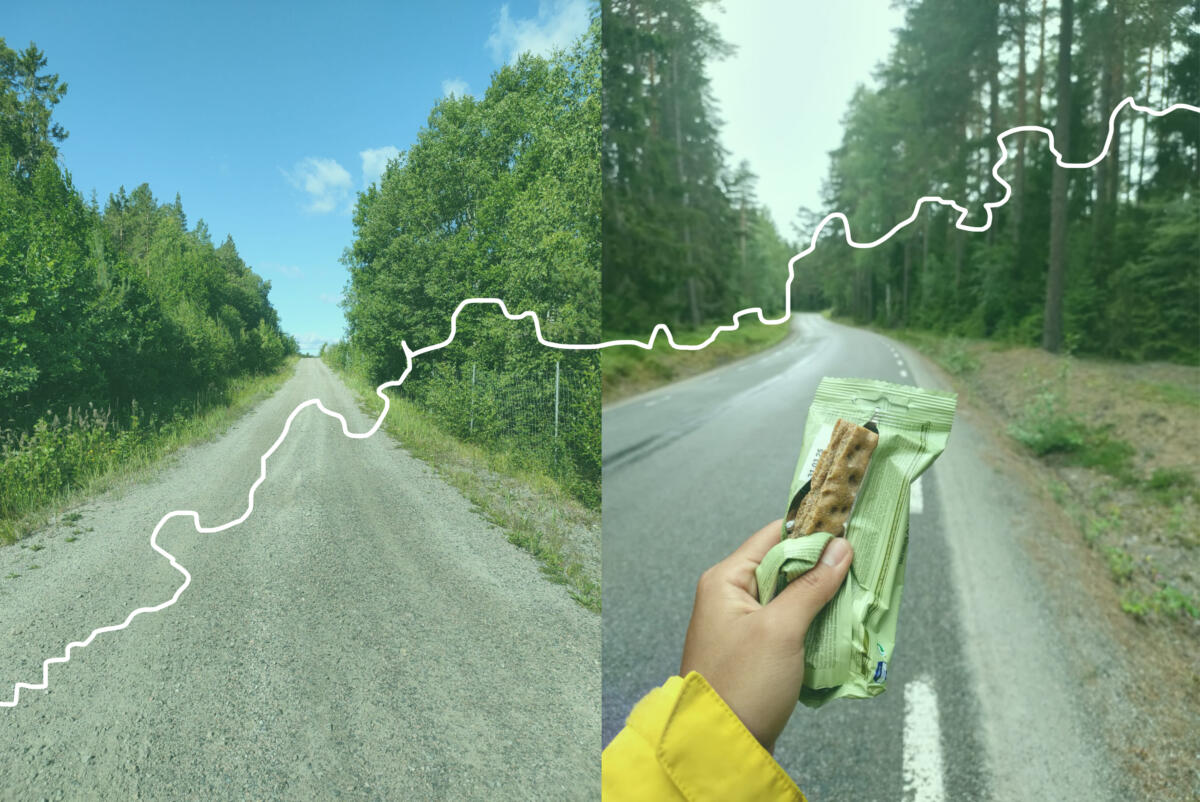Finland Cycling I: Mental Preparation and Route Planning for the First Bikepacking Trip
Want to explore Finland on a bicycle? Student Ambassador Rong shares their tips on how to plan and prepare.

Hey everyone, I’m Rong, a third-year student at the Academy of Fine Arts and a student ambassador. I love bikepacking and cycling. During the summer of 2024, I went on a solo bikepacking trip from Sweden to the Netherlands. I’ve also taken several weekend camping trips in Finland.
In this blog post, I’ll share a few tips on how to mentally prepare for your first bikepacking trip, from maintaining a peaceful mindset to planning your routes.
Finnish summers and autumns are amazing! In my opinion, cycling and camping are among the best ways to experience Finland’s beautiful nature and charming small towns. With a bike and a tent, overnight stays in other Finnish cities become much more affordable.
There are also two previous blog posts: one on where to get a bike in Helsinki, and another on short-distance cycling destinations near the city. If you’re interested, check them out! If you have concerns about safety while camping, there’s also a post about camping and staying safe.
Mental preparation
Know your WHY
It’s important to clearly understand why you’re going on a bikepacking trip. Whether it’s to spend time with friends, see the world, search for the meaning of life, challenge your physical limits, or simply travel from point A to point B in an eco-friendly way, knowing your motivation will keep you focused.
Plan your trip according to your priorities and rules
Your priorities might include budget, speed, or schedule, and these factors significantly affect your planning. Some people set personal rules, such as no cars, no flying, or no staying in hostels or hotels. Planning with these in mind will help shape your experience.
Have a destination and know the road conditions as well as your limits
Once you’ve decided on a destination, you can start planning your route. Personally, I prefer to cover longer distances—around 100km a day. It’s helpful to check elevation gains and wind directions to make your ride more predictable. I use Komoot to assess elevation and road conditions, and documenting each ride helps track progress. Strava is almost essential cyclists.
Accept that things don’t always go as planned
We all hope for perfect cycling days with sunny but not-too-hot weather, some clouds, and a constant tailwind. However, sometimes it’s the opposite—heavy rain, headwinds, and unexpected challenges. When this happens, it’s okay to ease off and not push too hard. Remember to be kind to yourself.
Rest more than you think you need
Cycling is energy-intensive and burns a lot of calories. It’s easy to forget to eat or drink enough during long rides. Don’t forget to take rest days in between. Recovery is just as important as the riding itself.
Just hit the road and go with whatever equipments you have
It’s best to simply go out there and see if bikepacking works for you. Cycling and camping aren’t for everyone, and you won’t know if it’s your thing until you try. This is a good approach before investing in expensive gear.
Route planning
Type of bike
The type of bike you choose significantly affects your route planning. Or perhaps it’s the other way around—you first decide the type of route you want to ride, then purchase a bike accordingly. Some people prefer to ride only on paved, smooth roads (I’m personally a roadie myself), while others enjoy gravel or mountain bike trails. Some like it all, which is why it’s not uncommon for people to own several bikes.
If you dream of riding on rougher terrain, a gravel bike would be a great option. It’s also a common choice for those who want versatility on different surfaces.
Route planning and tracking
Komoot is great for both navigation and route planning. By entering your start and end points, it provides an elevation profile, helping you predict the difficulty of the route. You can also select your fitness level, riding speed, and preferred cycling type when planning routes in the app. However, you’ll need to pay to unlock the Komoot world map if your route crosses several countries. This is a one-time payment of around 27 euros.
Strava is mainly used for tracking cycling activities, but it also supports other sports like swimming and running. Tracking your rides helps you see how much progress you’ve made. Plus, it’s always motivating to receive “Kudos” (thumbs up on Strava) from other athletes for your effort! Strava offers several useful features like offline routes and training plans, but these require a premium subscription. Students can get the premium version at half price.
Google Maps
Some prefer not to pay for navigation apps, and in my experience, Google Maps works reasonably well in the Nordic regions of Europe. However, it can sometimes lead you through strange shortcuts. Despite that, it generally does the job of getting you from point A to point B.
I use the satellite view in Google Maps to check the road conditions, so I can see whether it’s a forest road or a paved one. That being said, Google Maps occasionally mislabels unpaved roads as paved, which can be frustrating, especially if you’re riding a road bike and end up on muddy or gravel roads.
Life of an art student
In this blog, Uniarts Helsinki students share their experiences as art students from different academies and perspectives, in their own words. If you want to learn even more regarding studying and student life in Uniarts and Helsinki, you can ask directly from our student ambassadors.
Latest posts
Follow blog